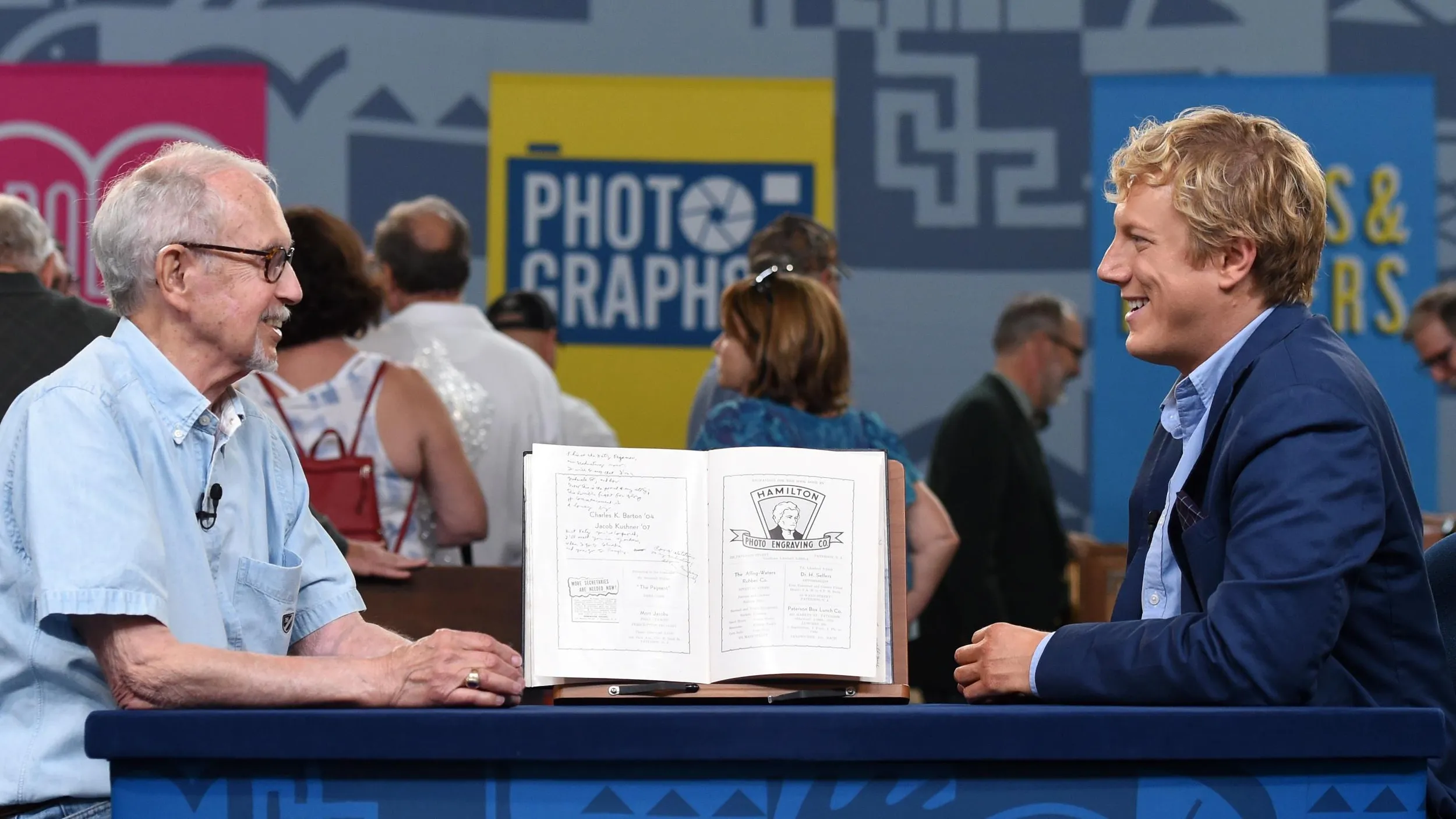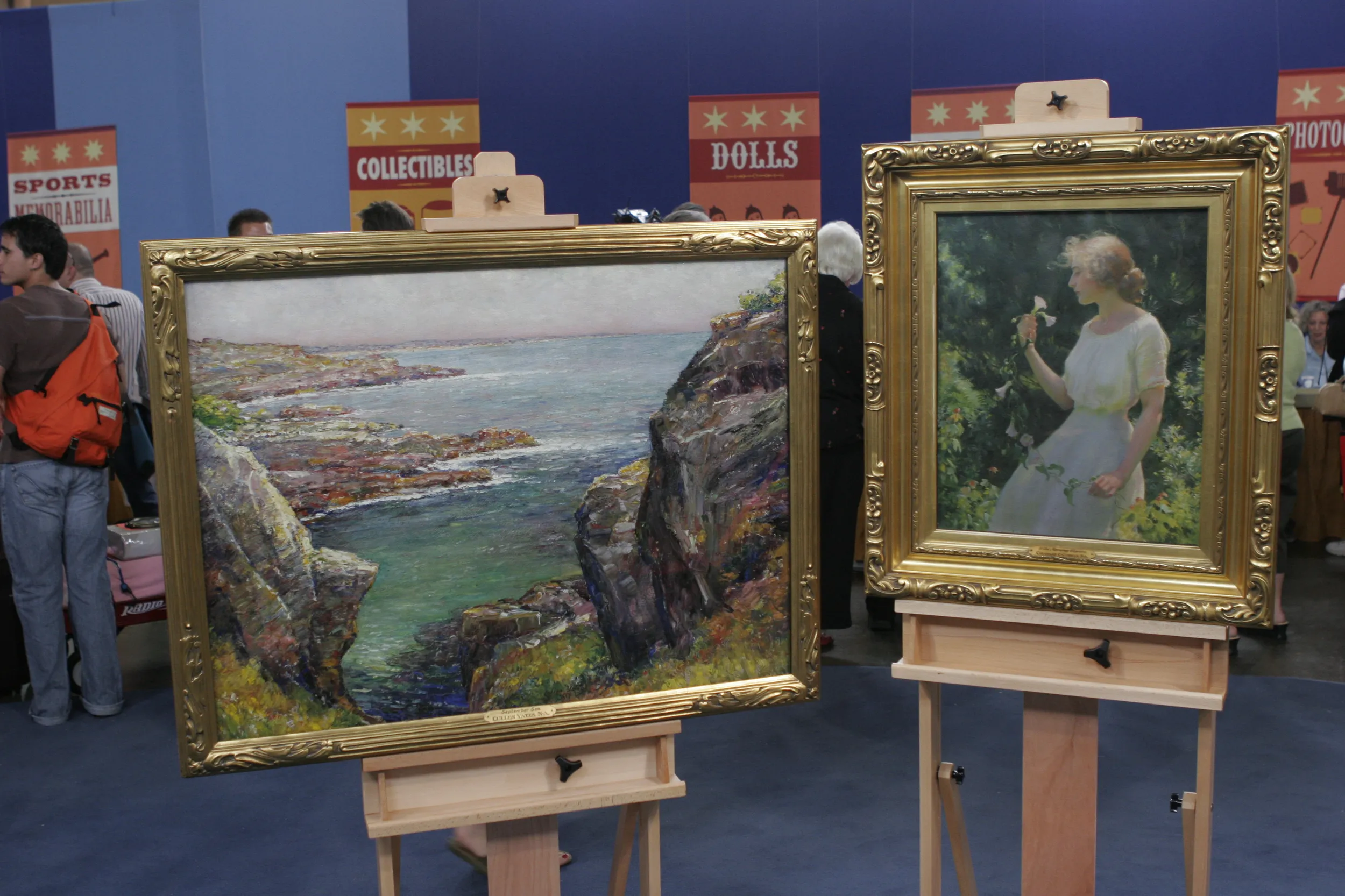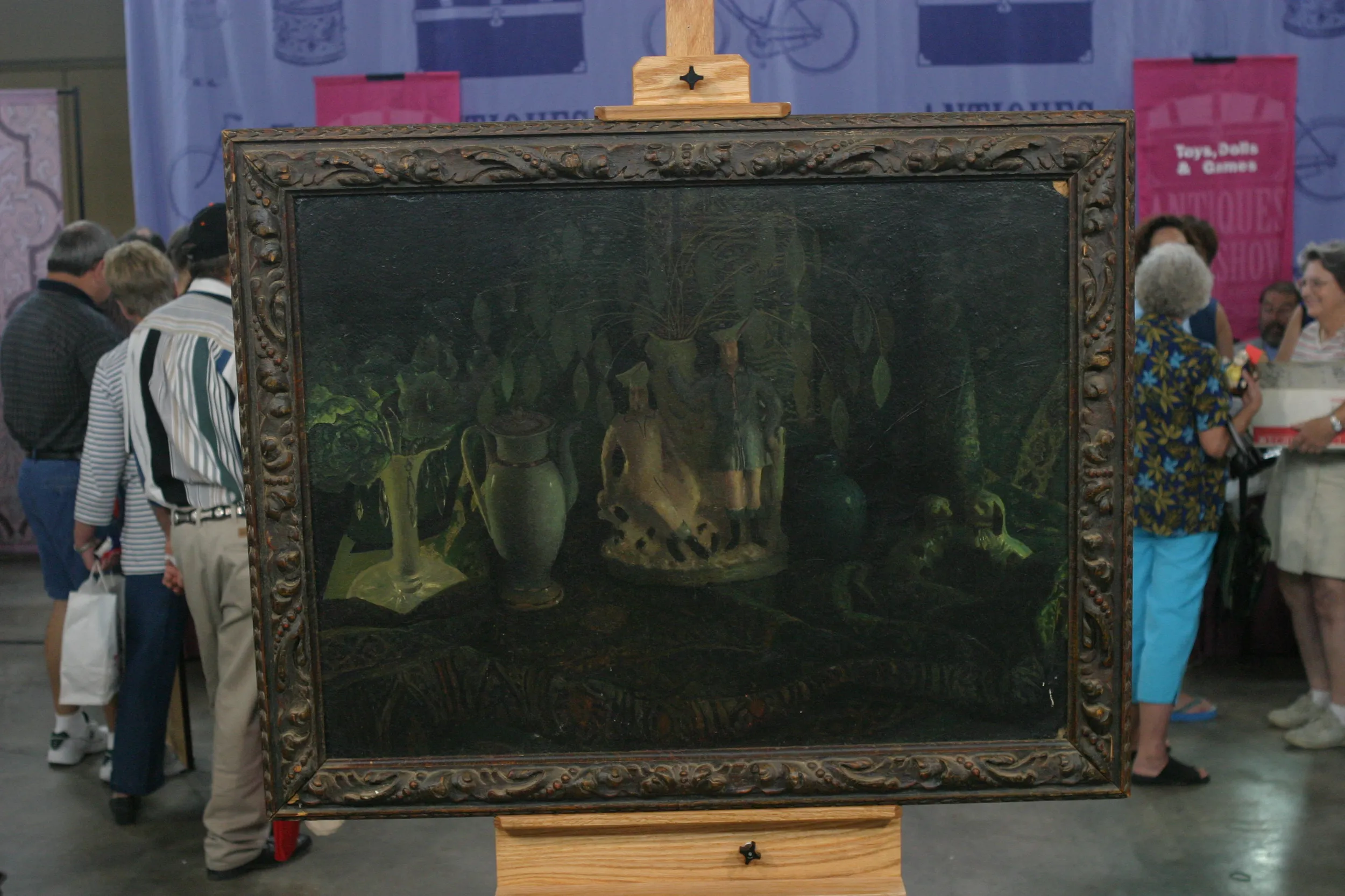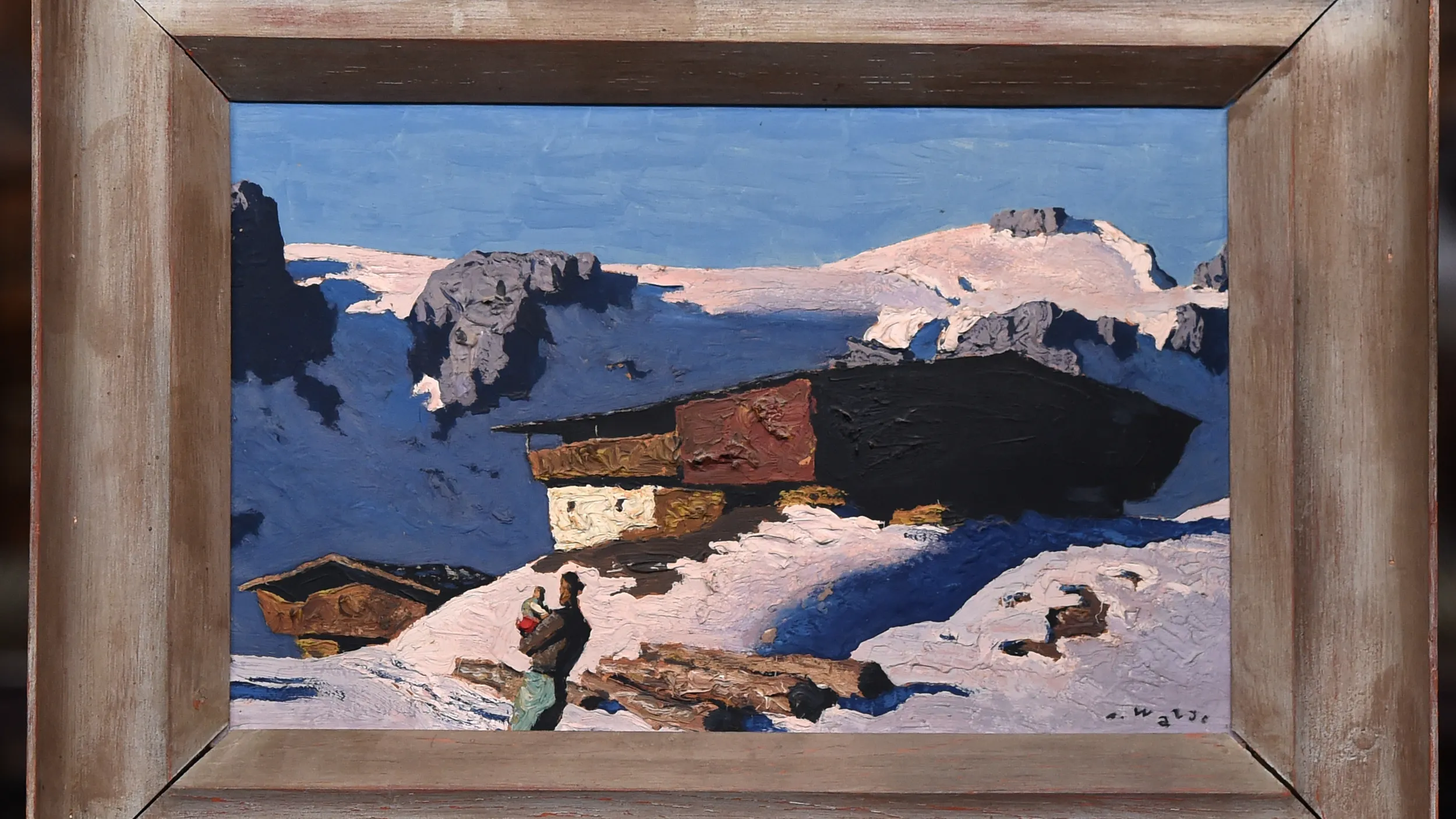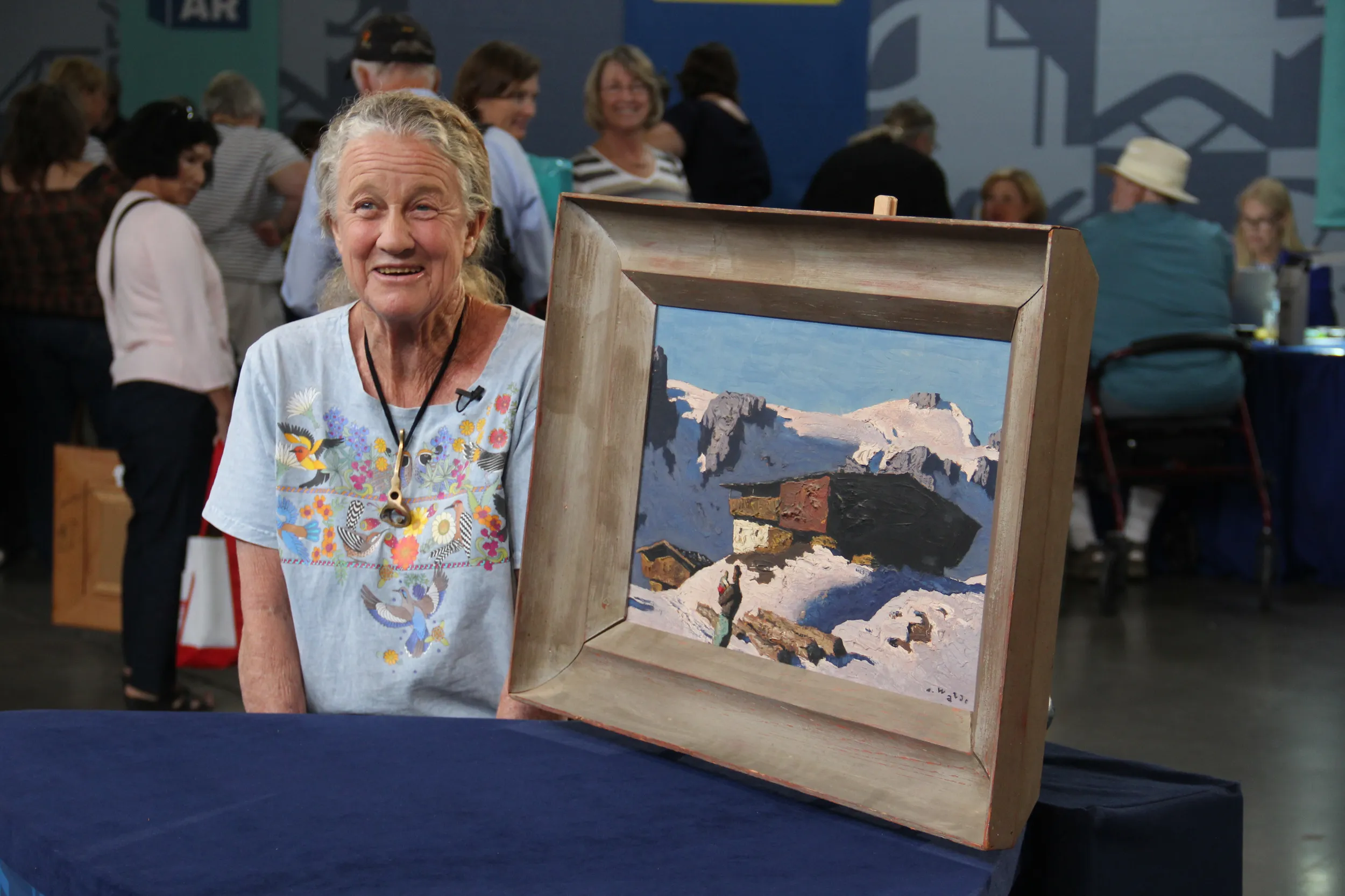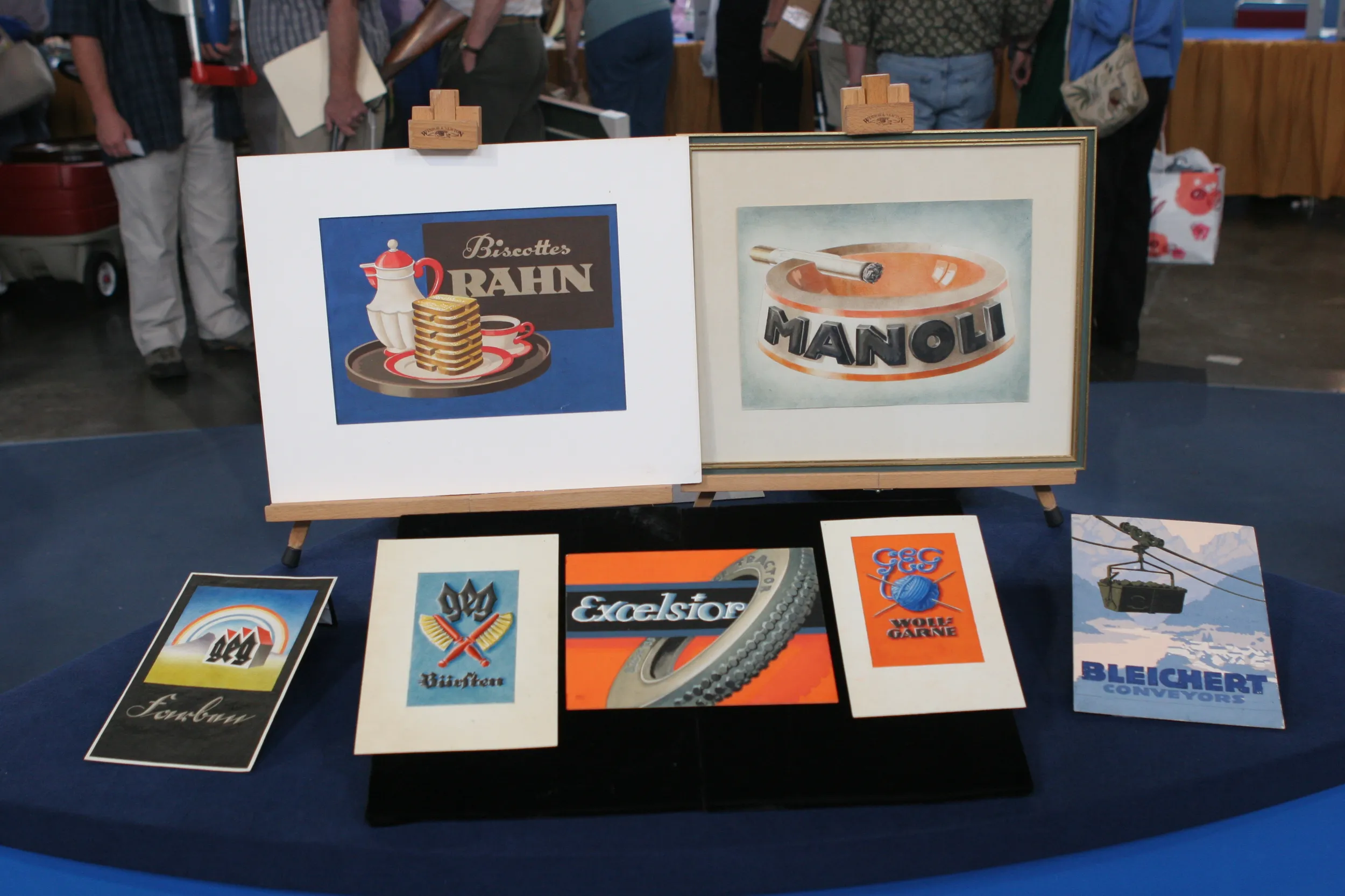GUEST: My mom was born in Europe. She went to Switzerland and skied and loved Switzerland. And when she immigrated to the United States, she brought this picture with her, kept it on her bedroom wall all the time, and would tell me about how wonderful Switzerland was.
APPRAISER: Now, do you know anything about the artist at all?
GUEST: Nothing at all, I don't even know his name.
APPRAISER: Okay.
GUEST: I can't read it!
APPRAISER: All right, his name was Alfons Walde. He's an Austrian artist, and it says "A. W-A-L" and then this is a D, and that's an E, so it's Walde. And he's born in 1891, but he goes off to school to train as an architect, and he's friends with the famous Austrian artist Gustav Klimt, and Egon Schiele, two of the major Austrian architects. And then he goes up to Kitzbühel in Innsbruck, which are the ski resort areas, and one of the first artists to do skiing paintings. She might have picked it up in Switzerland, but she might have gone across the border to Kitzbühel and skied there in Innsbruck. Around 1925 or so, he starts to really focus on the skiing paintings and the alpine paintings. This one would probably be around 1935. What's interesting is that in this, he's able to have this bright white against the deep shadows here, and also he does this scene a number of times over and over again, and so this is called the Einsamer Berghof. Einsamer Berghof means "the lonely mountain cabin." And so he has the figures here. We have a person with a little child being held there up in this mountaintop retreat. One of the things that's distinctive about him is his use of impasto. He has this very thick impasto. Impasto's a built-up paint. And you can see that in here, these areas that come up probably a quarter of an inch off the board. This is oil on board. One of the things that's interesting about Walde over the last few years is he's been faked. And what I like about this with you is the fact that you've had it in your family, on your wall. I've had a look at the back, even the nails in the same place, this is its original frame. It's never been out of its frame. And one of the things about that impasto is it catches some of the dirt. You can see that there. So, it could stand a little bit of a cleaning. If I were to put an auction estimate on it, I would put it at $200,000 to $300,000.
GUEST: Oh! Oh, that's terrible! (laughter) Oh! It was such a nice picture to just sort of have around.
APPRAISER: It's the nicest thing I've seen all day.
GUEST: Thank you very much, you've made my day.

